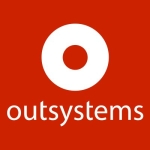What is our primary use case?
When we were looking for a software solution, we didn't go for bmp'online because of CRM, we went with it because of their business process management solution. Bonus, the CRM works great too.
How has it helped my organization?
Initially, with bpm, we wanted a really simple, tangible "first win," within the organization. A simple time-off request. It was super-basic, but the whole organization would benefit. We wanted a way to really show to the rest of the organization that this solution is powerful and can do what we need it to do. We ended up converting our very manual, paper-based time-off request - which touched six different desks and had a lot of delays and could be lost - into bpm with a complete business process management structure so that:
- back-end business process ensured it was processed correctly every time;
- collaboration within the process;
- clarity of current step in the process.
It also plays a part in the payroll cycle, depending on whether it's make-up time or if they're using PTO.
It streamlined the entire process. It is a super-basic example, but releasing this for the entire organization immediately saved paper, a ton of employee and management time needed to process these requests. The potential that is baked into the bpm software solution is incredible.
That was a small release internally for us with bpm. Since then, we've implemented the CRM system, which is customized to the needs of the company. We have a very complex structure, being an electrical contractor. Our sales cycle isn't like a standard manufacturing company, and through integration and customization, we have a process that leverages our people and skills.
Before bpm, we had something that was cumbersome, time-intensive, and person-forced collaboration. With bpm, we have automated our processes and collaboration efforts, we have a business process in which rules must be followed, with the overall goal of the right information at the right time. This allows us to proactively enhance our decision makers and streamline the process. The business process engine has had the biggest impact.
On a foundational level, the business process engine is our infrastructure. We work our business processes through bpm so it triggers what we need when we need it while driving the process.
What is most valuable?
The business process management contains the most value. What bpm ended up doing with their software solution is giving you the power, in your own hands, in a way that is incredibly intuitive and well-structured. And of course, it works out-of-the-box. If your company can take the out-of-the-box package and run with it, that's great. But, for our complex infrastructure/processes, we needed to roll up our sleeves and get into the whole business process management, building really complex workflows, customizing the look and feel, and bpm fit that bill.
Companies of all sizes can go through the learning curve and can find value in this software solution. As long as you have an idea of what you're looking for, you can get that structure in place and bpm'online will help you towards your goals. They have a team mentality and the functionality and features you can use or build off of, they're almost endless.
What needs improvement?
My biggest concern is the lack of a multi data source on a page.
The way bpm's infrastructure works, you can only have one data source on a page. It connects to a object and you're locked in at that point. You can use virtual fields, but the problem is you can't edit - again, our company has a complex structure. If you need to connect fields from different objects, you would create it in that object and sync it.
For instance, in our sales cycle we have an object called Project - this is our outer shell, our container - then Scopes and then Opportunities. These are three different objects containing different levels of information. Now if we wanted certain functionality to work for a field from a higher level in a lower level object, we then would have to create a home for it in the Scope and the Opportunity objects.
It would be that much more powerful if we could have a multi data source linked to a single page. That would really clean up a lot of things.
I rate the solution, overall, at nine out of ten.
For how long have I used the solution?
One to three years.
What do I think about the stability of the solution?
If you had asked me about the stability when we first got it, I would have said it's "pretty good," but as of now, in 2018, I think it's phenomenal.
We haven't really had any issues in 2018. They've really been upping their game.
We're heavily integrated with building our BPM, so we're on the development side. We're writing code, we're pushing updates to our test sites and then to production. I need to make sure that my users have zero downtime. We haven't had an issue in 2018 and I believe it's because of bpm's dedication to its customers.
What do I think about the scalability of the solution?
I don't see it having a ceiling. I think this solution has an infinite number of possibilities. If you are as complex as our company is, and we were able to figure it out, anybody can.
How are customer service and technical support?
I don't have too many complaints about the support. They're well-versed and they have a great deal of knowledge of the software. They don't work often over the phone with you, but if ever the need arises, your customer success contact can help facilitate.
I would recommend getting a Customer Success contact at bpm. They have been incredibly helpful with moving things along. I don't know how it would work without one, and we wouldn't continue without.
The only concern or complaint I have is that they're primarily in a different time zone, something like a 12-hour difference, so my morning is their end of day. That does cause some conflict when we have something that needs to be addressed as soon as impossible. There's potentially some slowness on their side because they're understaffed during their midnight hours. But for the most part, based on our agreement - in which they have a 24-hour turnaround for us - they hit it pretty much every time.
Which solution did I use previously and why did I switch?
We had a homegrown solution that was really old and could not perform for the size of a company we are. It was time to find a new solution.
How was the initial setup?
We had a team-setup approach. We originally did an onsite box that we had full control over. We had access to the servers and all the source code, etc. We ended up changing route and went cloud-based for a lot of reasons. Since the time that we went to cloud, they've made a lot of feature improvements and functionality improvements. The improvements streamlined the development process to aid maintaining and upgrading the production site efficiently and correct.
In terms of how long the deployment took, we built the foundational pieces first. Part of our infrastructure, how we manage users in general, requires Active Directory. We had built out that piece in bpm as our first steps towards integration, to be an automated system. It took about four or five months to really start using it to a notable degree.
For the first thing we technically rolled out, the time-off request, it took about a year, but I don't know how much of that would be bpm's issue and how much of that would be ours. We had other business processes running in the background that helped keep our infrastructure aligned.
There was a huge learning curve initially. If you use the out-of-the-box experience and you don't plan on doing any customization, it could be implemented quickly, and a lot less painfully, than we did it. The fact that we tried the onsite solution first, instead of going cloud right out the gate, added time and complexity. I have a couple of complaints about the cloud where we do not have access to the source code, but I would recommend to anybody that they go cloud. It's just better.
As far as our implementation strategy goes, we really needed to hit the foundational level first: Our employee management, the Active Directory, the housekeeping which keeps the company up and running. We identified all of those milestone points of the process, implemented those in bpm, and then kept it up to sync with our other external software solutions.
That foundational piece was running before we went live three or four months later. We wanted that foundational piece laid and set in stone.
What about the implementation team?
What was our ROI?
From a 6,000-foot level, just the collaboration piece that we've already gained with our sales cycle is invaluable, absolutely invaluable.
What's my experience with pricing, setup cost, and licensing?
We discussed pricing very early on. We ended on a very reasonable note. It benefited us, it benefited them and, overall, we were both happy.
Which other solutions did I evaluate?
We looked at Salesforce, Oracle, and SAP but we were blown away with bpm's business process management solution. We were going for a software solution that could handle that aspect really well. It just so happened that bpm also had a nice CRM piece. The combination of both of those and having a really well-thought-out pricing plan sold the deal.
From my standpoint, it blows out of the water all the other competitors out there that we were potentially looking at, and it was in a reasonable price range.
What other advice do I have?
You need to have a programmer in-house if you have a complex structure. That, or you will need to discuss this during the pricing conversation with bpm. If you don't have a complex structure, really take a look at the out-of-the-box functionality and let bpm manage it on their side. Go cloud, less hardware and less hassle. My final point would be to make sure you get a Customer Success manager. They are invaluable.
There are a few things that, in 2016, when we first got the product, it was lacking, but the beauty of bpm is that they worked with us to get it to where we needed it. They heard our voice and they were eager and excited to work with us. You're not going to get that from a Fortune 500 company. They're going to hear you and say, "Yeah, that's nice. We just don't do that." With bpm'online, customer success is their success. It's a beautiful thing.
To clarify, we built in-shop, ourselves, and there were a couple functionalities that the system was missing, things like field objects and how their back-end structure worked. They made enhancements and adjustments that overall helped their product. But from our point of view, we built it from the ground up. We integrated with our infrastructure. We began mapping everything out, how we needed it to be placed in our infrastructure, and then we built it out. Granted, bpm does offer a service to do that for you, from what I understand, but we took a different route because we had the benefit of having in-house programmers.
We have about 200 users in bpm right now. The expectation would bring that up to 600. As far as the users' roles go, they're from president all the way down to the front desk. Everybody has a piece of the pie, everybody is either indirectly or directly working with the system, whether it be notifications or a part of the process. If somebody doesn't know bpm is affecting their work - which I don't think is the case - the fact is, it is.
We have three staff for deployment and maintenance of the system. You could get by with fewer if it was their full-time job.
We're building out our project life cycle, so that it covers everything from lead to cash in hand. We're currently building out the second phase, which will bring it all the way to "paid." Once this is done, bpm will cover the entire project life-cycle.
Disclosure: My company does not have a business relationship with this vendor other than being a customer.















